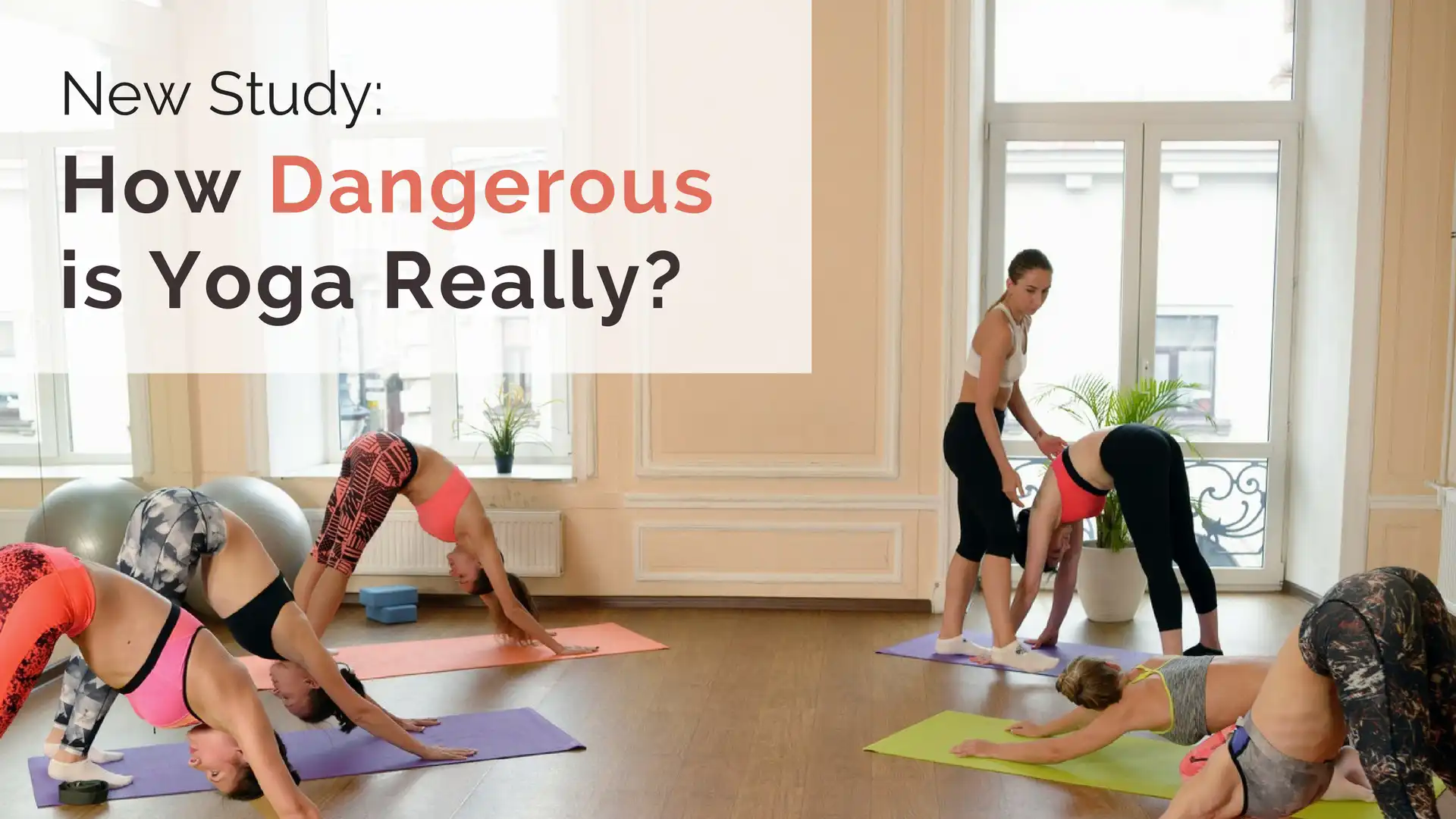New Study Charts Yoga Injuries Over a 13-Year Period

A few years back, author William Broad’s now infamous article in The New York Times, entitled ‘How Yoga Wrecks Your Body’ sent shock waves through the yoga community. Arguing that yoga injuries were ‘the dirty little secret’ of the yoga community, the article used interviews and anecdotal evidence to paint a picture of a the numerous apparent hazards of yoga.
Now, an interesting new study seeks to chart the actual statistical evidence for yoga injuries. Researchers Thomas A. Swain, MPH and Gerald McGwin, MS, PhD looked at all yoga-related injuries as indicated by emergency room visits in the US over a 13-year period, and calculated national estimates categorized by injury type and frequency.
So, how dangerous is yoga really? Well, there’s good news and bad: Firstly, yoga injuries are on the rise, but your odds of having one are still extremely small. However, those aged 65 and above are more likely to have a serious injury in yoga than their younger peers.
Research on Yoga Injuries: Study Details
To determine the rate of incidence and type of yoga related injuries occurring in the country, the researchers used data from 2001 to 2014 from the National Electronic Injury Surveillance System (NEISS), a database under the Consumer Product Safety Commission. NEISS records emergency department injury narratives for 100 US hospitals, and codes them according to the consumer products involved-including sporting activities.
Yoga is not one of the specific sports categorized in NEISS, so to determine the prevalence of yoga-related injuries, the researchers searched the narratives for the term, “yoga.” These entries were then individually reviewed to ensure that the injuries were, in fact, directly related to yoga. They found that the term search rendered 818 narratives containing the term “yoga”, and after review, 774 were considered related to the practice of yoga.

The yoga related injuries were classified into body region (trunk, upper limb, lower limb, head, and other), and diagnosis (abrasion, dislocation, fracture, strain/sprain, not stated, and other). Patients information was also collected on incident locale, hospital disposition, race, sex and age. Three age categories were created: 18 to 44, 45 to 65, and 65+. The researchers then used data from the National Health Statistics Reports to estimate the number and age distribution of yoga practitioners nationally.
The researchers estimated that there were approximately 29,590 yoga-related injuries in emergency departments in the US between 2001 and 2014. The rate of yoga-related injuries increased from 9.55 per 100,000 participants in 2001, to 17.01 per 100,000 participants in 2014. However, the risk of a serious injury remains quite low – less than 0.02%. It turns out, the most frequently injured area was the trunk (46.6%), while the most common injury type was a sprain or strain (45.03%).
Who’s at the Greatest Risk for Yoga Injuries?
The most interesting discovery was that, when the data was stratified by age, the majority of those injured were practitioners ages 65 and over. In that most frequently injured trunk area (shoulders & back), the rate of injury for the 65+ category was 11.18 per 100,000 participants, compared with the 8.67 per 100,000 for 45-64 year olds, and 4.54 per 100,000 for 18-44 year olds. It’s important to note that practitioners over 65 had higher rates of injuries for each body region. 
Even taking account for experience level, older experienced yogis were injured more than younger experienced yogis, just as older beginners were getting injured more than younger beginners. The authors posited that one possible reason is because older practitioners were more likely to have pre-existing conditions making them more susceptible to injuries. For example, conditions like decreased bone density, decreased lower joint cartilage, lower flexibility and spinal issues could all be contributing factors.
The Bottom Line: It Comes Down to Specialized Yoga Teacher Education
Yoga is growing more and more popular, and other studies have shown that just as the number of people practicing yoga has rapidly increased, so has the number of people teaching it. Unfortunately, many of those teachers do not have training to teach older students who lack lithe 20-year old bodies. Authors of this study suggest that, “it would seem that there is a potential lack of appropriate education even for certified instructors.” That is to say, most certified yoga teachers do not have the know how for instructing students with say, osteoporosis, and teaching them like any other student can lead to an increased risk of injury.
So how can the yoga community address this problem of older students getting injured? Not by discouraging them from yoga all together. In fact, there are many studies showing that yoga can help people with osteoporosis, arthritis, high blood pressure and overall healthy aging-if the instruction is led by someone with proper training. The key is to give yoga instructors access to a more comprehensive teacher training, and to make that transparent for students so they can have confidence that their yoga teacher knows how to safely instruct them. All instructors should have the correct tools to help all of their yoga students.
To learn more about teaching yoga to a mature population, read this article on what seniors need in a yoga class.
Loren and Ellen also have many full courses on a wide range of topics for teaching yoga to seniors as well as several free downloads.
Source: Swain, T. A., & McGwin, G. (2016, November 16). Yoga-Related Injuries in the United States From 2001 to 2014. Orthopaedic Journal of Sports Medicine. Retrieved January 25, 2017, from https://www.ncbi.nlm.nih.gov/pmc/articles/PMC5117171/



